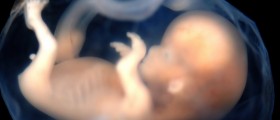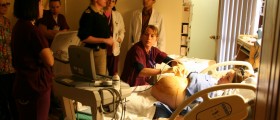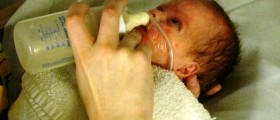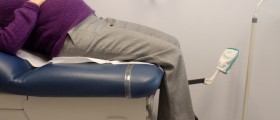
There is a variety of techniques and approaches which allow insight in the condition of the fetus in the uterus. Some of them are used through the entire pregnancy while others may be performed only when the fetus reaches certain gestational age. For instance, there is not so frequently used Pinard's stethoscope. But doctors use ultrasound imaging which is of major importance for detection of some anatomical abnormalities.
What is Cardiotocography?
Cardiotocography (CTG) is a procedure , better to say technique employed in monitoring and analysis of the fetal heart rate (FHR).
After the 1960s this technique has been used for most babies and it is considered rather accurate. With the assistance of cardiotocography the incidence of cerebral palsy associated with episodes of intrapartum cerebral ischemia can be significantly reduced. However, since intrapartum cerebral ischemia is actually blamed for cerebral palsy in not so many cases, the remnant number of children simply cannot be saved from this severe illness.
Still, there is a clear connection between cardiotocography findings if there is any improvement of the fetal condition once the treatment is initiated.
Interpretation of Cardiotocography
This technique is used for confirmation of a normal condition of the fetus, Namely, if FHR is normal, this means that there is no hypoxia jeopardizing the baby nor that the fetus suffers from acidaemia or any similar cause of distress.
As far as results of cardiotocography are concerned, there are four features of the exam.
Baseline FHR is between 110 and 160 beats per minute (bpm). Then if FHR is between 100 and 109 or 161-180, it is considered non-reassuring. Abnormal findings are in case there is 100 bpm or greater than 180 bpm.
As for variability, reassuring findings are when there is more than 5 bpm, while fetal heart beats of less that 5 for 40-90 minutes are classified as non-reassuring. Abnormal findings are in case there is less than 5 bpm more than 90 minutes.
Finally, when it comes to decelerations, there should be no present for the result to be interpreted reassuring. If there is typical variable decelerations with over 50% of contractions, the result is classified as non-reassuring. Normally, the previously refers to the period of 90 minutes or in case there is a single prolonged deceleration lasting for up to 3 minutes. Finally, abnormal findings are reported if there are either atypical variable decelerations with over 50% of contractions or late decelerations. Both of the mentioned should last for more than 30 minutes or there is only a single extended for more than 3 minutes.
Accelerations are normal finding and they are considered reassuring. Still, if there are no accelerations present, the exam is suspicious and of uncertain significance.
To sum up, a normal cardiotocography would have all 4 features reassuring while the suspicious one has one non-reassuring and all other reassuring findings. Pathological cardiotocography has equal or more that 2 features non-reassuring or equal and more than 1 feature abnormal.

















Your thoughts on this
Loading...